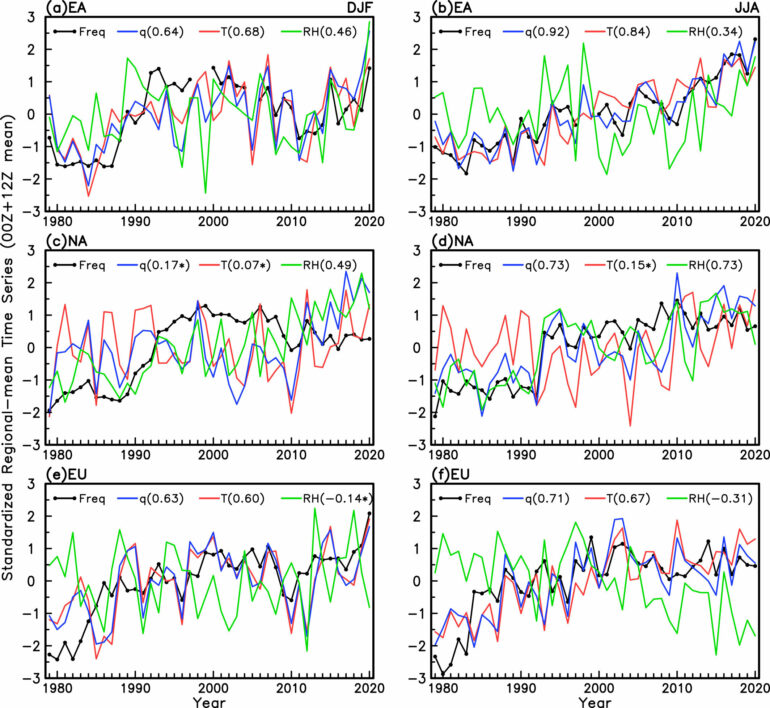While the impacts of climate change vary across the globe, most scientists agree that, overall, a warming environment is increasing both the frequency and intensity of severe weather events such as tornados and intense thunderstorms.
The formation of these severe storms requires instability or unstable conditions in the atmosphere, which climate models project will increase under greenhouse gas-induced global warming. However, how atmospheric instability has changed over recent decades remains unclear.
Atmospheric scientists at the University at Albany and China’s Jiangsu Meteorological Observatory have co-published a new paper in Geophysical Research Letters that finds unstable atmospheric conditions have significantly increased over the past 40 years.
The finding further validates the connection between climate change and severe weather events.
“Atmospheric instability is necessary for the occurrence of convection and vertical mixing in the atmosphere,” said Aiguo Dai, study co-author and a Distinguished Professor in UAlbany’s Department of Atmospheric and Environmental Sciences. “Thus, whether the atmosphere becomes increasingly unstable under greenhouse gas-induced global warming has major implications for the occurrence of severe weather, such as tornadoes and other violent storms.”
“The increasingly unstable conditions reported in our study are significant and consistent with climate model-project responses to increased greenhouse gases,” added Jiao Chen, the study’s lead author and a researcher at Jiangsu Meteorological Observatory. “It suggests that the atmosphere will continue to become less stable, and we will likely see more severe weather in the future.”
To arrive at their findings, the researchers relied on atmospheric data collected by weather balloons since 1979, with a focus on long-term records of upper-air temperature and humidity around the globe.
During balloon flights, atmospheric data is collected and transmitted in real-time to a ground computer through a small, expendable instrument package called a radiosonde. Due to frequent changes in sounding sensors over the last four decades, the balloon data used by the researchers was homogenized to ensure consistency.
Their analysis showed that the atmosphere has become increasingly unstable (between 8 and 32 percent) and more favorable for severe weather conditions over most land in the Northern Hemisphere from 1979 to 2020.
The increased unstable conditions mainly resulted from increased low-level moisture content and warmer air temperatures.
“Our research team and others have devoted considerable efforts to using publicly available weather balloon data to analyze the impacts of climate change,” said Dai. “The new study results are consistent with previous findings that have shown an increased frequency of severe weather events under global warming. It’s a positive step for the use of homogenized radiosonde data in both atmospheric reanalysis and longer-term climate change studies.”
Although the weather balloon data used mainly covered the Northern Hemisphere, the researchers found similar results in more sparsely distributed land locations in the tropics and Southern Hemisphere, which suggests the atmosphere has become increasingly unstable across the globe.
Along with this study, Dai has also published findings on several other climate change-related projects, including a 2022 study that explored how Arctic sea ice has impacted surface temperatures in both the Arctic and North Atlantic Ocean over multiple decades.
More information:
Jiao Chen et al, The Atmosphere Has Become Increasingly Unstable During 1979–2020 Over the Northern Hemisphere, Geophysical Research Letters (2023). DOI: 10.1029/2023GL106125
Provided by
University at Albany
Citation:
Study: Climate change has increased atmospheric instability over past 40 years (2023, November 30)



